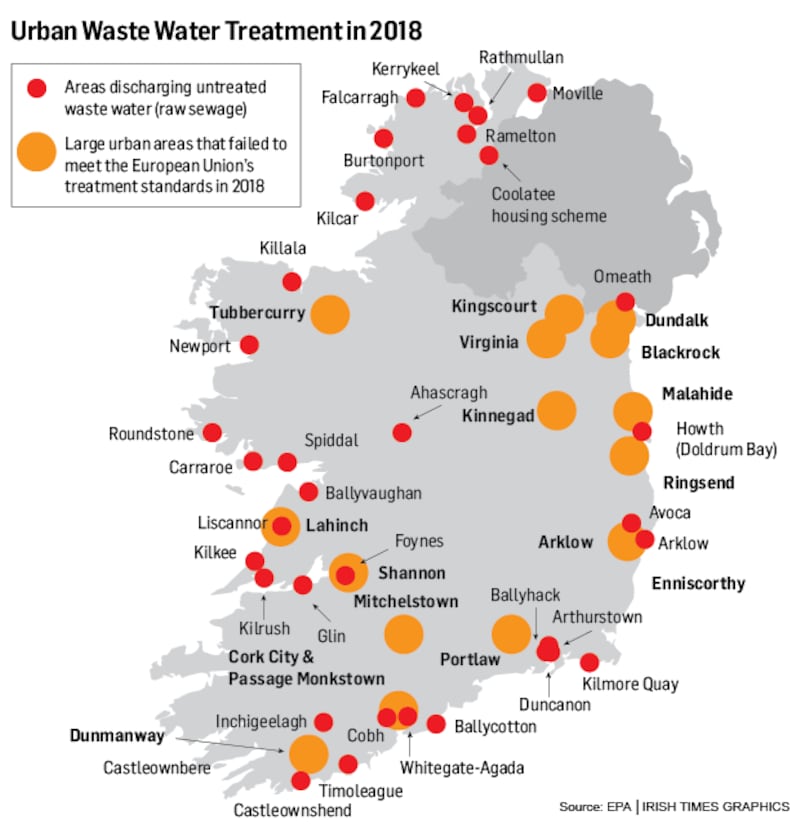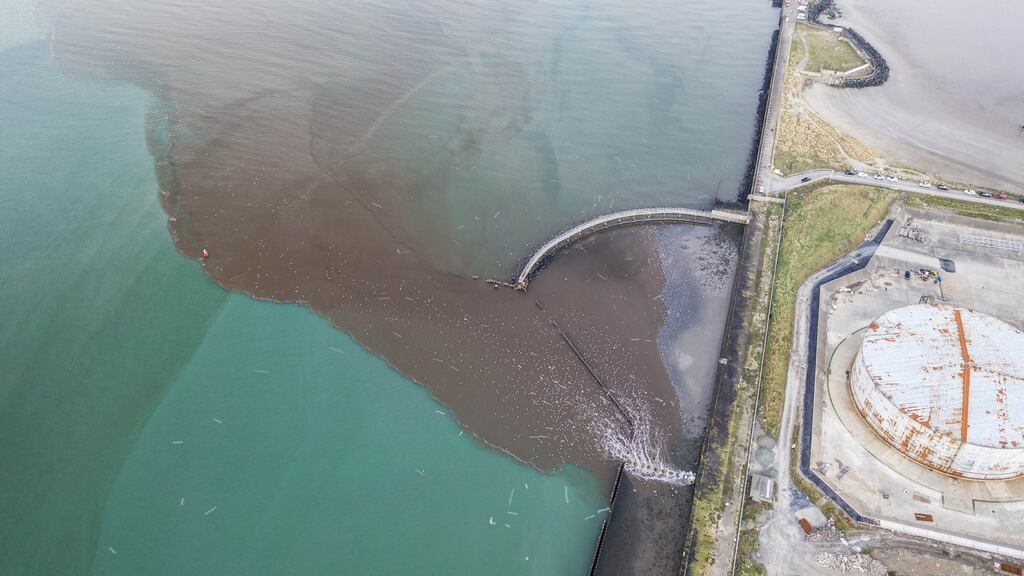The pace at which Irish Water is fixing deficiencies in waste water treatment infrastructure “is too slow”, as raw sewage continues to be released into the environment in many areas, according to the Environmental Protection Agency (EPA).
In its latest report on waste water treatment in Ireland, the EPA accuses the utility of "repeatedly extending dates it expects to complete important works needed at areas where they are still releasing untreated waste water".
The report for 2018 notes that in 2016 Irish Water said it would stop discharging untreated waste water from 30 of the 36 areas by the end of 2020. “It is now only on target to provide treatment for two of these areas by the end of 2020.”
In 2018 the utility said it would connect 31 of the 36 areas to treatment between 2019 and 2021. It has revised this down to 23.
“Extending the time to eliminate discharges of untreated waste water prolongs the risks to the environment and public health. It is important to provide the outstanding infrastructure to end discharges of untreated waste water without any further delays,” the EPA warns.
Waste water treatment at 21 of Ireland’s 169 large towns and cities did not meet national and European standards. While this is down from 28 in 2017, these areas produce more than half of Ireland’s urban waste water – the deadline for Ireland to comply was 2005.
Raw sewage from the equivalent of 77,000 people in 36 towns and villages is released into coastal waters and rivers every day. The pace of improvements needed is so slow raw sewage discharges will continue past 2021 in 13 locations, in spite of commitments to end such discharges before then.
"We are seeing repeated delays in providing treatment for many areas and it is not acceptable that 13 towns and villages will still have no waste water treatment by the end of 2021. Irish Water must speed up its delivery of key infrastructure," said Dr Tom Ryan, director of the EPA's office of environmental enforcement.

The EPA highlights problem areas including:
The overloaded treatment plant at Ringsend in Dublin: It is not large enough to treat the waste water it receives. Built for a capacity of 1.64 million people, it has to cope with demand that can reach 2.3 million during busy periods. The plant is to be upgraded in two phases to 2.4 million.
But Irish Water recently revised the expected completion date from 2023 to 2025. “The quality of the treated waste water will improve as the upgrade works proceed but is not expected to start meeting required standards until the end of 2022 at the earliest. Completing this project without delay is essential to protect the Lower Liffey Estuary and Dublin Bay,” it adds.
Arklow, Co Wicklow; Moville, Co Donegal and Cobh and Passage-Monkstown, Co Cork: These four large urban areas were not connected to treatment plants in 2018 – though Passage-Monkstown was connected in 2019.
Towns and cities discharging into sensitive areas: These included Cork, where the more stringent level of treatment required to remove phosphorous and/or nitrogen was not present.
Ageing infrastructure: Some towns are served by ageing treatment plants designed and built for a time when the population and volume of waste water needing treatment was smaller, notably in Shannon, Co Clare and Tubbercurry, Co Sligo, which were built in the 1970s. "These overloaded and outdated plants no longer have the capacity or long-term resilience to consistently treat waste water to the required standards."
In Dunmanway, Co Cork and Kinnegad, Co Westmeath the necessary infrastructure was in place but in 2018 broke down or did not perform as it should.
The report confirms some improvements in the past year, including the elimination of discharges of raw sewage from two areas.









